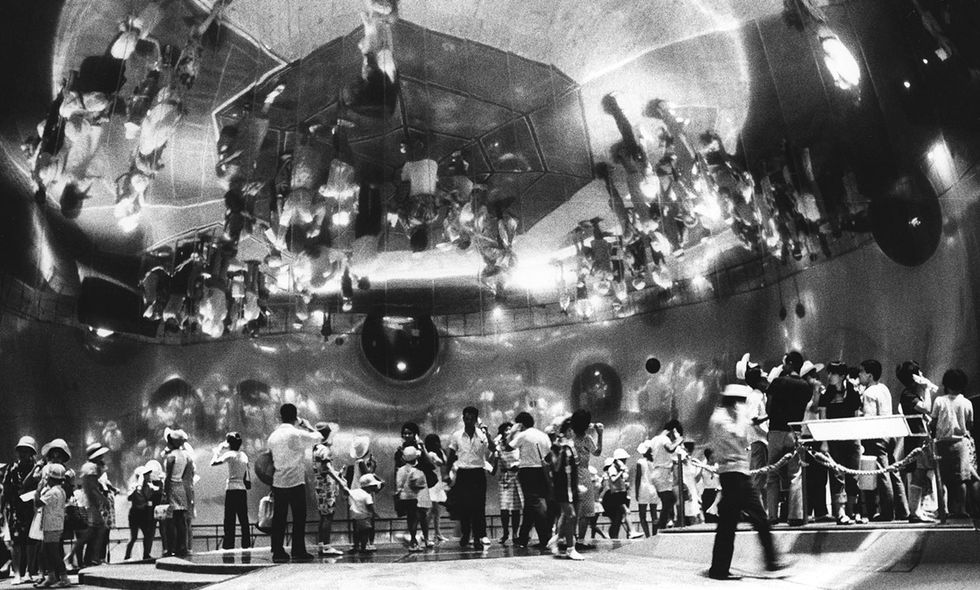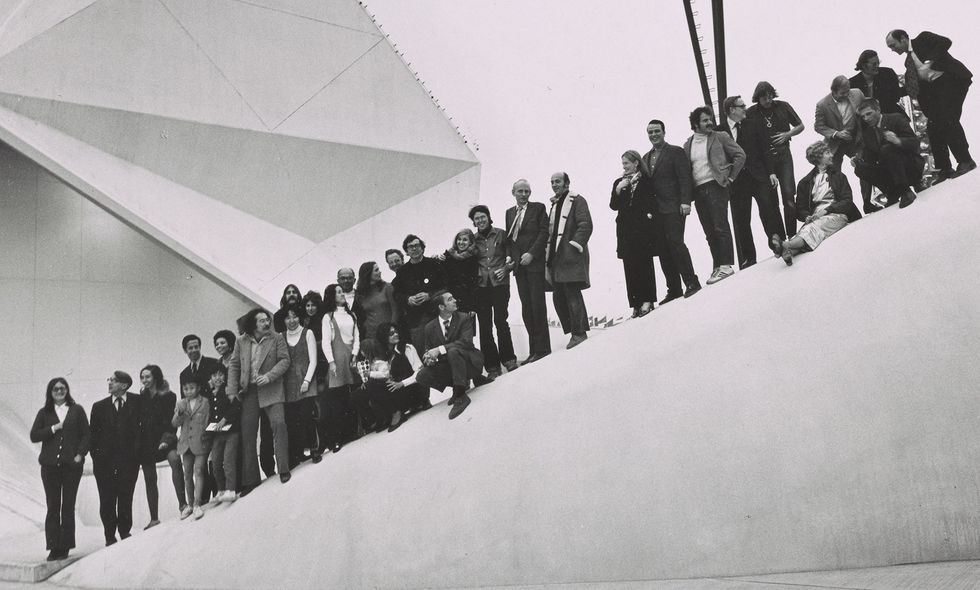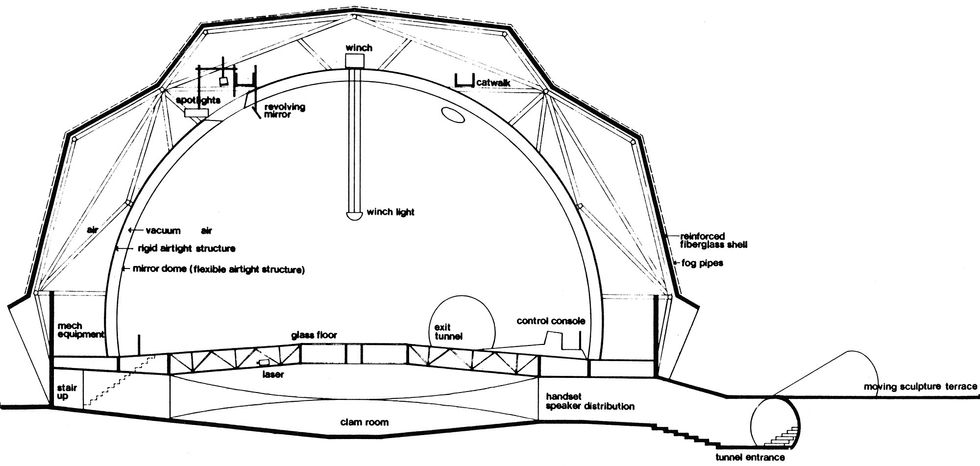When Artists, Engineers, and PepsiCo Collaborated, Then Clashed at the 1970 World’s Fair
50 years ago, artists and engineers staged one of the most ambitious and expensive multimedia events—and infuriated their corporate backers

Artificial fog enshrouds the Pepsi Pavilion at Expo '70 in Japan.
On 18 March 1970, a former Japanese princess stood at the center of a cavernous domed structure on the outskirts of Osaka. With a small crowd of dignitaries, artists, engineers, and business executives looking on, she gracefully cut a ribbon that tethered a large red balloon to a ceremonial Shinto altar. Rumbles of thunder rolled out from speakers hidden in the ceiling. As the balloon slowly floated upward, it appeared to meet itself in midair, reflecting off the massive spherical mirror that covered the walls and ceiling.
With that, one of the world's most extravagant and expensive multimedia installations officially opened, and the attendees turned to congratulate one another on this collaborative melding of art, science, and technology. Underwritten by PepsiCo, the installation was the beverage company's signal contribution to Expo '70, the first international exposition to be held in an Asian country.
A year and a half in the making, the Pepsi Pavilion drew eager crowds and elicited effusive reviews. And no wonder: The pavilion was the creation of Experiments in Art and Technology—E.A.T.—an influential collective of artists, engineers, technicians, and scientists based in New York City. Led by Johan Wilhelm “Billy" Klüver, an electrical engineer at Bell Telephone Laboratories, E.A.T. at its peak had more than a thousand members and enjoyed generous support from corporate donors and philanthropic foundations. Starting in the mid-1960s and continuing into the '70s, the group mounted performances and installations that blended electronics, lasers, telecommunications, and computers with artistic interpretations of current events, the natural world, and the human condition.
E.A.T. members saw their activities transcending the making of art. Artist–engineer collaborations were understood as creative experiments that would benefit not just the art world but also industry and academia. For engineers, subject to vociferous attacks about their complicity in the arms race, the Vietnam War, environmental destruction, and other global ills, the art-and-technology movement presented an opportunity to humanize their work.
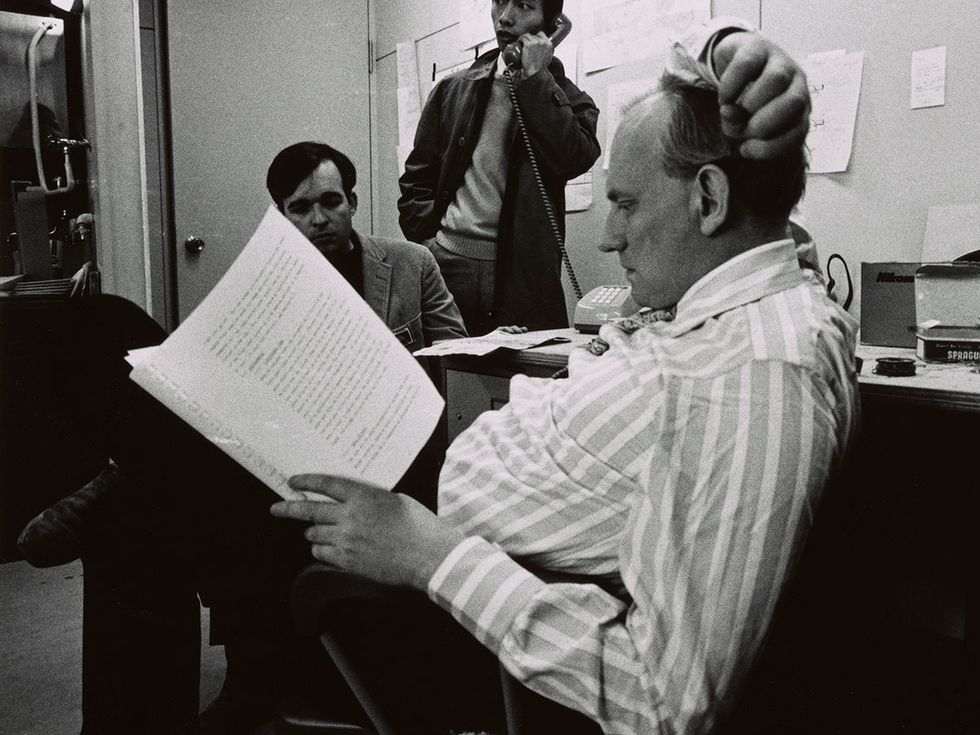
Accordingly, Klüver and the scores of E.A.T. members in the United States and Japan who designed and built the pavilion considered it an “experiment in the scientific sense," as the 1972 book Pavilion: Experiments in Art and Technology stated. Klüver pitched the installation as a “piece of hardware" that engineers and artists would program with “software" (that is, live performances) to create an immersive visual, audio, and tactile experience. As with other E.A.T. projects, the goal was not about the product but the process.
Pepsi executives, unsurprisingly, viewed their pavilion on somewhat different terms. These were the years of the Pepsi Generation, the company's mildly countercultural branding. For them, the pavilion would be at once an advertisement, a striking visual statement, and a chance to burnish the company's global reputation. To that end, Pepsi directed close to US $2 million (over $13 million today) to E.A.T. to create the biggest, most elaborate, and most expensive art project of its time.
Perhaps it was inevitable, but over the 18 months it took E.A.T. to execute the project, Pepsi executives grew increasingly concerned about the group's vision. Just a month after the opening, the partnership collapsed amidst a flurry of recriminating letters and legal threats. And yet, despite this inglorious end, the participants considered the pavilion a triumph.
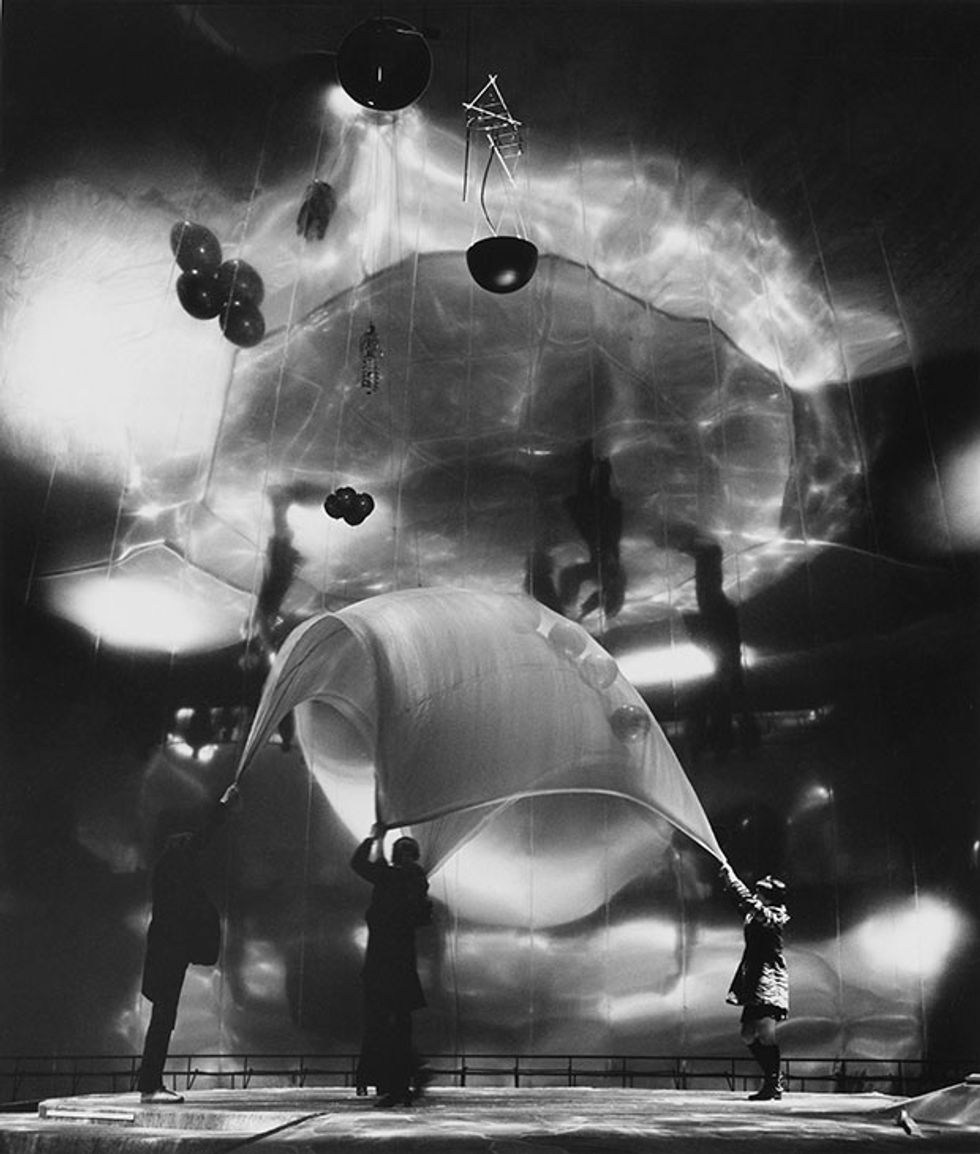
The pavilion was born during a backyard conversation in the fall of 1968 between David Thomas, vice president in charge of Pepsi's marketing, and his neighbor, Robert Breer, a sculptor and filmmaker who belonged to the E.A.T. collective. Pepsi had planned to contract with Disney to build its Expo '70 exhibition, as it had done for the 1964 World's Fair in New York City. Some Pepsi executives were, however, concerned that the conservative entertainment company wouldn't produce something hip enough for the burgeoning youth market, and they had memories of the 1964 project, when Disney ran well over its already considerable budget. Breer put Thomas in touch with Klüver, productive dialogue ensued, and the company hired E.A.T. in December 1968.
Klüver was a master at straddling the two worlds of art and science. Born in Monaco in 1927 and raised in Stockholm, he developed a deep appreciation for cinema as a teen, an interest he maintained while studying with future Nobel physicist Hannes Alfvén. After earning a Ph.D. in electrical engineering at the University of California, Berkeley, in 1957, he accepted a coveted research position at Bell Labs in Murray Hill, N.J.
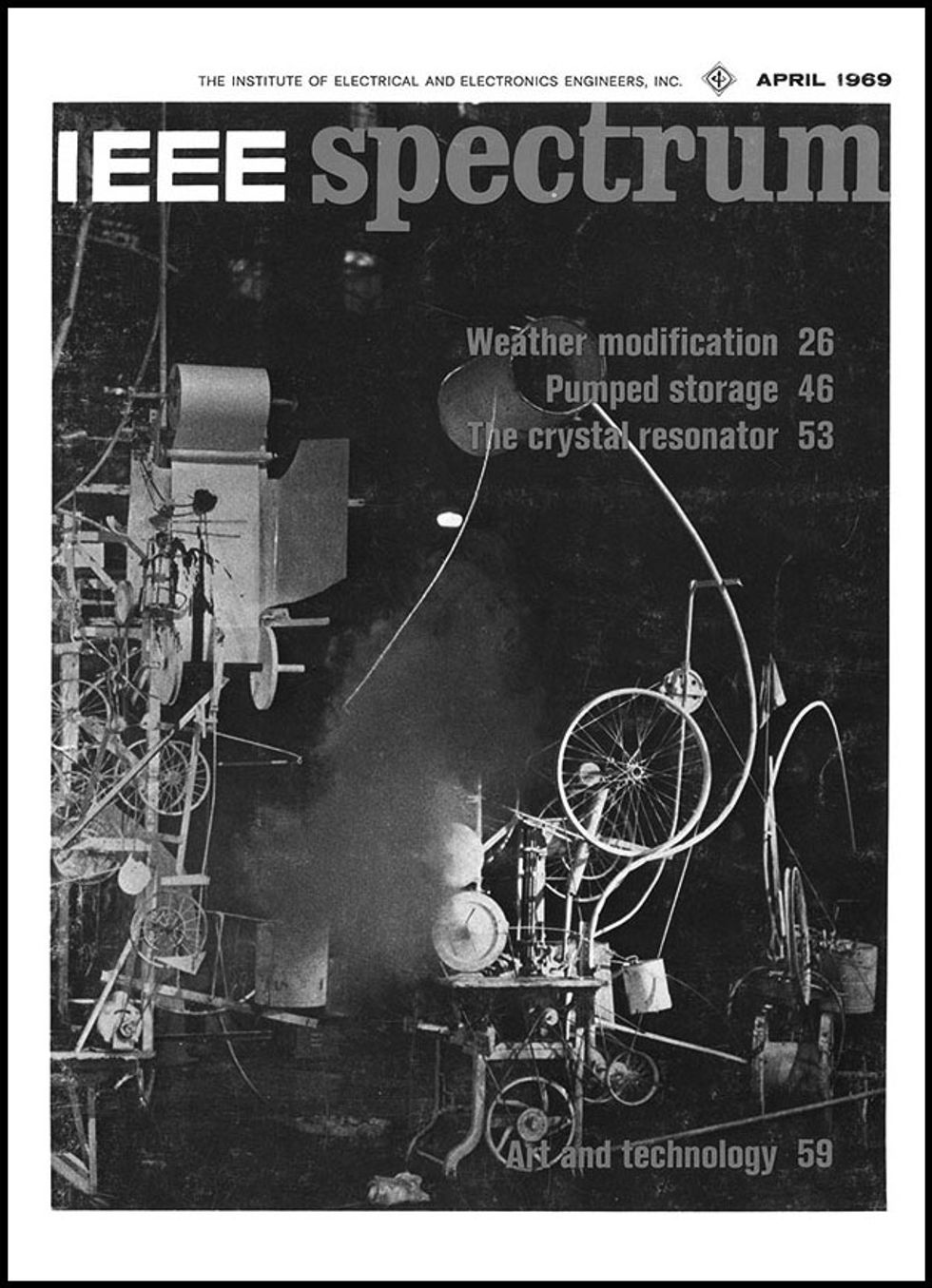
While keeping up a busy research program, Klüver made time to explore performances and gallery openings in downtown Manhattan and to seek out artists. He soon began collaborating with artists such as Yvonne Rainer, Andy Warhol, Jasper Johns, and Robert Rauschenberg, contributing his technical expertise and helping to organize exhibitions and shows. His collaboration with Jean Tinguely on a self-destructing sculpture, called Homage to New York, appeared on the April 1969 cover of IEEE Spectrum. Klüver emerged as the era's most visible and vocal spokesperson for the merger of art and technology in the United States. Life magazine called him the “Edison-Tesla-Steinmetz-Marconi-Leonardo da Vinci of the American avant-garde."
Klüver's supervisor, John R. Pierce, was tolerant and even encouraging of his activities. Pierce had his own creative bent, writing science fiction in his spare time and collaborating with fellow Bell engineer Max Mathews to create computer-generated music. Meanwhile, Bell Labs, buoyed by the economic prosperity of the 1960s, supported a small coterie of artists-in-residence, including Nam June Paik, Lillian Schwartz, and Stan VanDerBeek.
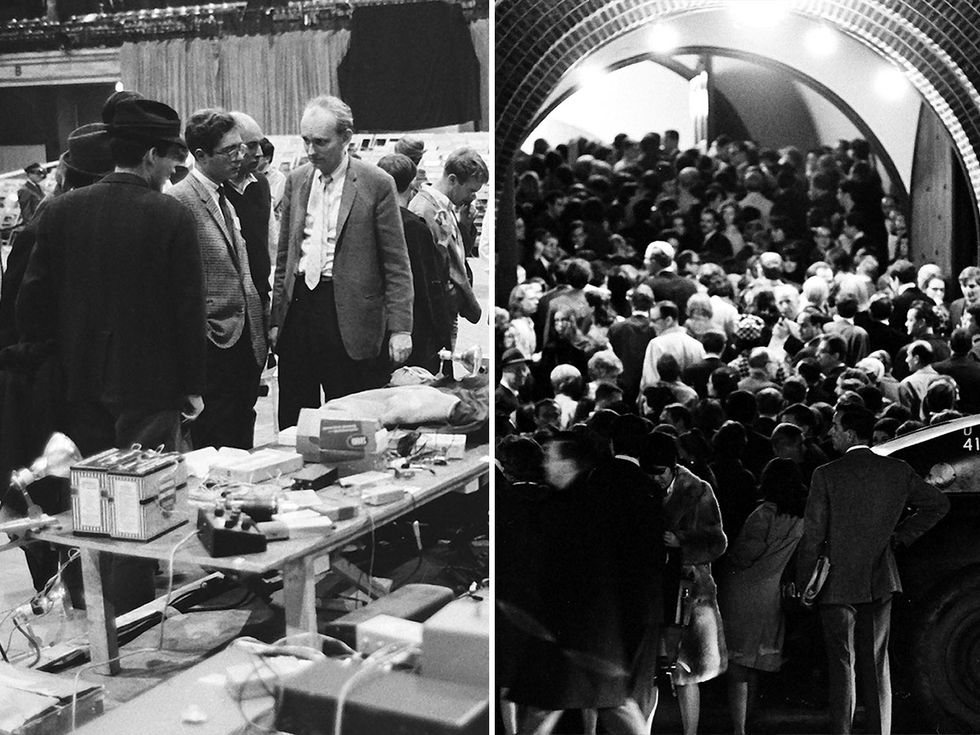
In time, Klüver devised more ambitious projects. For his 1966 orchestration of 9 Evenings: Theatre and Engineering, nearly three dozen engineering colleagues worked with artists to build wireless radio transmitters, carts that floated on cushions of air, an infrared television system, and other electronics. Held at New York City's 69th Regiment Armory—which in 1913 had hosted a pathbreaking exhibition of modern art—9 Evenings expressed a new creative culture in which artists and engineers collaborated.
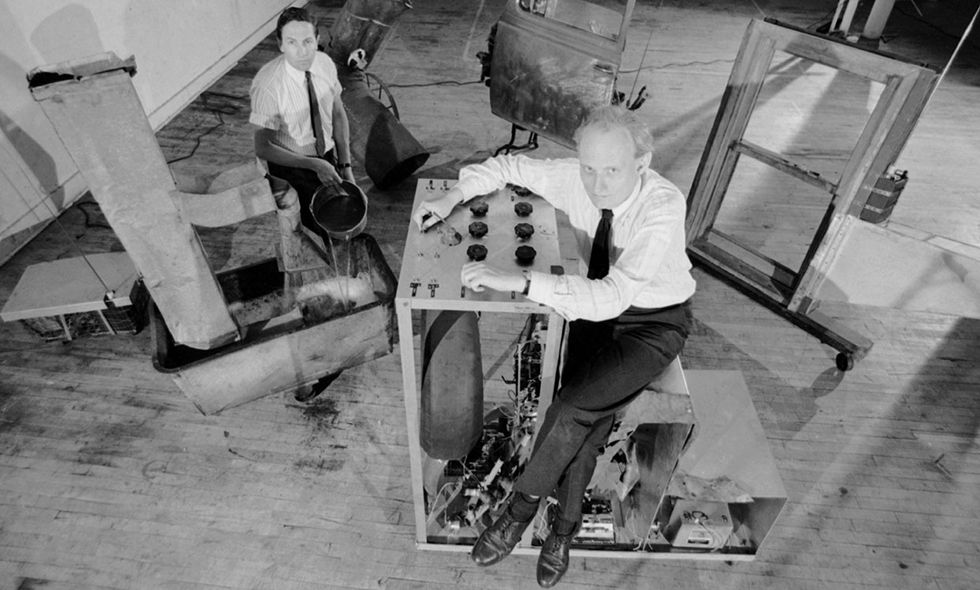
In the midst of organizing 9 Evenings, Klüver, along with artists Rauschenberg and Robert Whitman and Bell Labs engineer Fred Waldhauer, founded Experiments in Art and Technology. By the end of 1967, more than a thousand artists and technical experts had joined. And a year later, E.A.T. had scored the commission to create the Pepsi Pavilion.
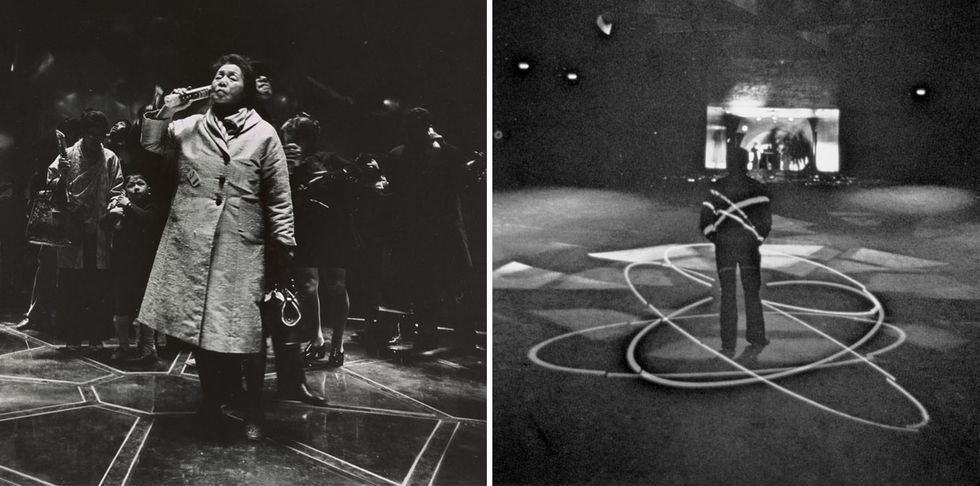
From the start, E.A.T. envisioned the pavilion as a multimedia environment that would offer a flexible, personalized experience for each visitor and that would express irreverent, uncommercial, and antiauthoritarian values.
But reaching consensus on how to realize that vision took months of debate and argument. Breer wanted to include his slow-moving cybernetic “floats"—large, rounded, self-driving sculptures powered by car batteries. Whitman was becoming intrigued with lasers and visual perception, and felt there should be a place for that. Forrest “Frosty" Myers argued for an outdoor light installation using searchlights, his focus at the time. Experimental composer David Tudor imagined a sophisticated sound system that would transform the Pepsi Pavilion into both recording studio and instrument.
“We're all painters," Klüver recalled Rauschenberg saying, “so let's do something nonpainterly." Rauschenberg's attempt to break the stalemate prompted a further flood of suggestions. How about creating areas where the temperature changed? Or pods that functioned as anechoic chambers—small spaces of total silence? Maybe the floor could have rear-screen projections that gave visitors the impression of walking over flames, clouds, or swimming fish. Perhaps wind tunnels and waterfalls could surround the entrances.
Eventually, Klüver herded his fellow E.A.T. members into agreeing to an eclectic set of tech-driven pieces. The pavilion building itself was a white, elongated geodesic dome, which E.A.T. detested and did its best to obscure. And so a visitor approaching the finished pavilion encountered not the building but a veil of artificial fog that completely enshrouded the structure. At night, the fog was dramatically lit and framed by high-intensity xenon lights designed by Myers.
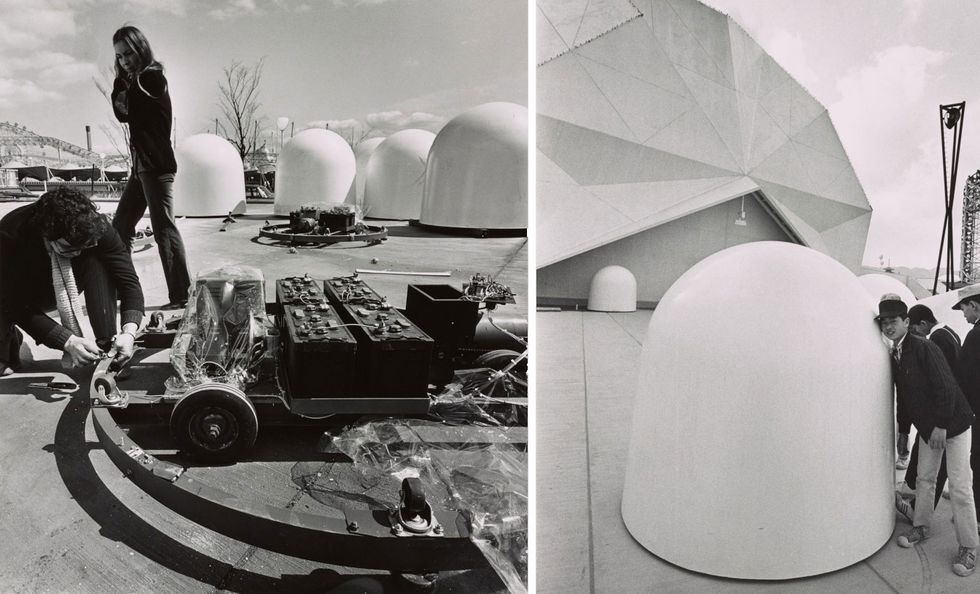
On the outdoor terrace, Breer's white floats rolled about autonomously like large bubbles, emitting soft sounds—speech, music, the sound of sawing wood—and gently reversing themselves when they bumped into something. Steps led downward into a darkened tunnel, where visitors were greeted by a Japanese hostess wearing a futuristic red dress and bell-shaped hat and handed a clear plastic wireless handset. Stepping farther into the tunnel, they would be showered with red, green, yellow, and blue light patterns from a krypton laser system.
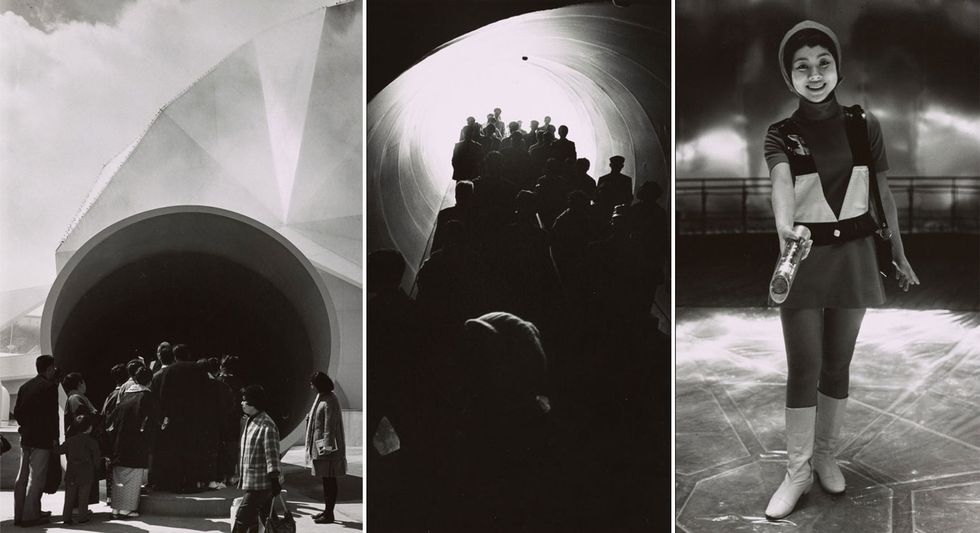
Ascending into the main pavilion, the visitors' attention would be drawn immediately upward, where their reflections off the huge spherical mirror made it appear that they were floating in space. The dome also created auditory illusions, as echoes and reverberations toyed with people's sense of acoustic reality. The floors of the circular room sloped gently upward to the center, where a glass insert in the floor allowed visitors to peer down into the entrance tunnel with its laser lights. Other parts of the floor were covered in different materials and textures—stone, wood, carpet. As the visitor moved around, the handset delivered a changing array of sounds. While a viewer stood on the patch of plastic grass, for example, loop antennas embedded in the floor might trigger the sound of birds or a lawn mower.
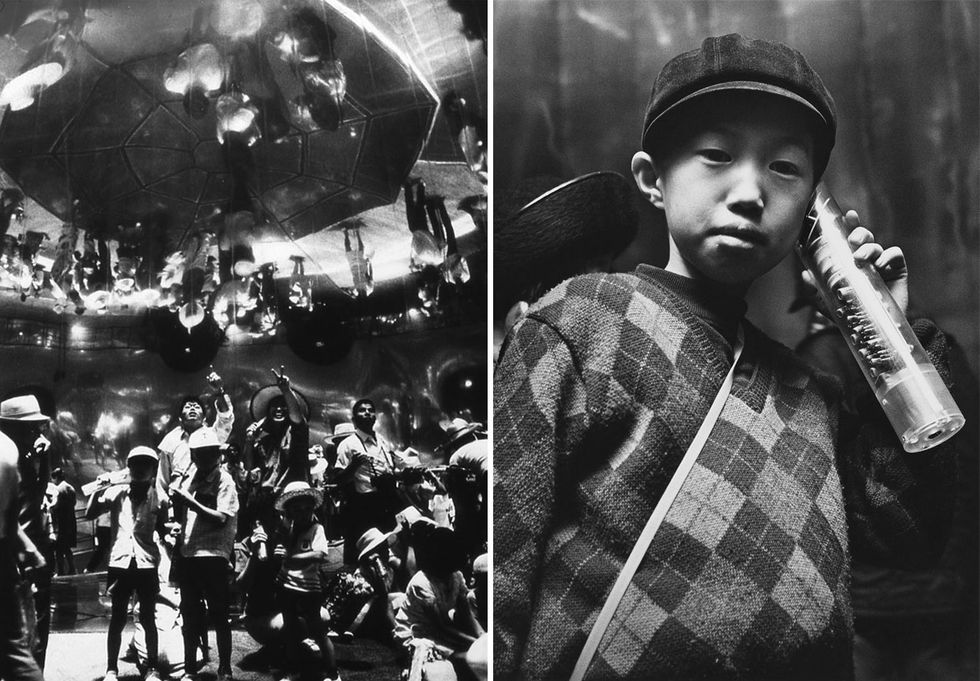
The experience was deeply personal: You could wander about at your own pace, in any direction, and compose your own trippy sensory experience.
To pull off such a feat of techno-art required an extraordinary amount of engineering. The mirror dome alone took months to design and build. E.A.T. viewed the mirror as, in Frosty Myers's words, the “key to the whole Pavilion," and it dictated much of what was planned for the interior. The research and testing for the mirror largely fell to members of E.A.T.'s Los Angeles chapter, led by Elsa Garmire. The physicist had done her graduate work at MIT with laser pioneer Charles Townes and then accepted a postdoc in electrical engineering at Caltech. But Garmire found the environment for women at Caltech unsatisfying, and she began to consider the melding of art and engineering as an alternate career path.
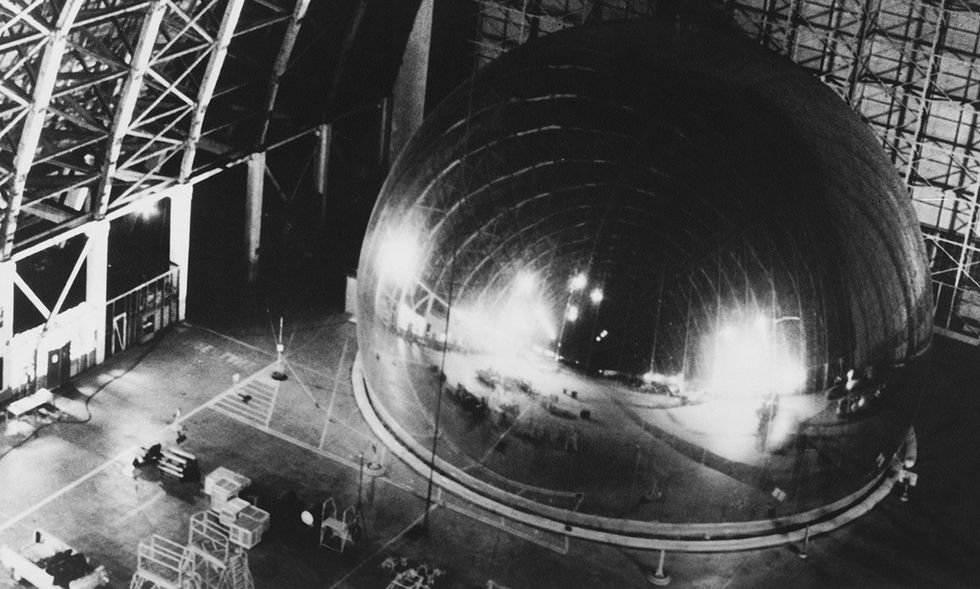
After experimenting with different ideas, Garmire and her colleagues designed a mirror modeled after the Mylar balloon satellites launched by NASA. A vacuum would hold the mirror's Mylar lining in place, while a rigid outer shell held in the vacuum. E.A.T. unveiled a full-scale prototype of the mirror in September 1969 in a hangar at a Marine Corps airbase. It was built by G.T. Schjeldahl Co., the Minnesota-based company responsible for NASA's Echo and PAGEOS [PDF] balloon satellites. Gene Youngblood, a columnist for an underground newspaper, found himself mesmerized when he ventured inside the “giant womb-mirror" for the first time. “I've never seen anything so spectacular, so transcendentally surrealistic.… The effect is mind-shattering," he wrote. What you saw depended on the ambient lighting and where you were standing, and so the dome fulfilled E.A.T.'s goal of providing each visitor with a unique, interactive experience. Such effects didn't come cheap: By the time Expo '70 started, the cost of the pavilion's silver lining came to almost $250,000.
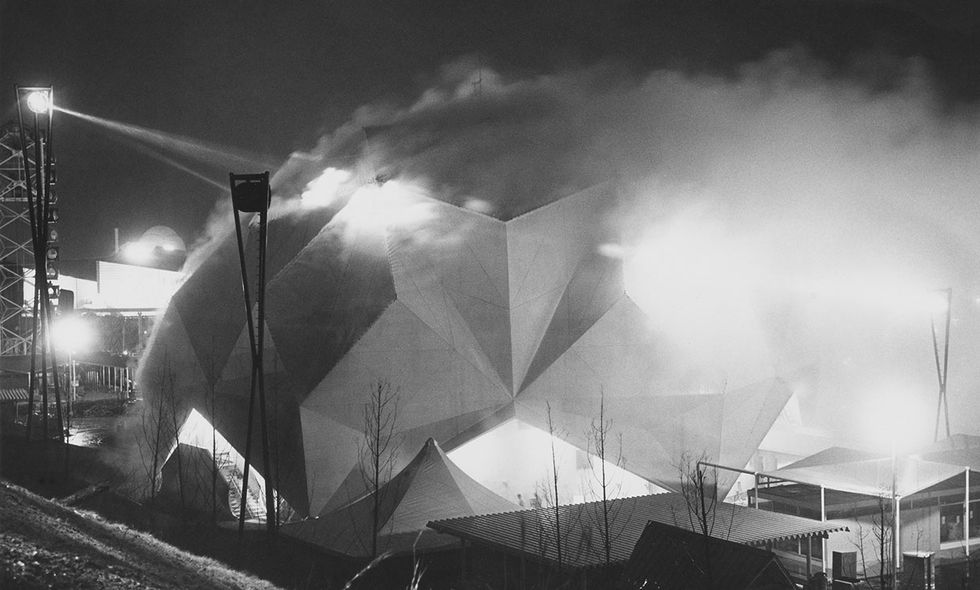
An even more visually striking feature of the pavilion was its exterior fog. Ethereal in appearance, it required considerable real-world engineering to execute. This effort was led by Japanese artist Fujiko Nakaya, who had met Klüver in 1966 in New York City, where she was then working. Born in 1933 on the northern island of Hokkaido, she was the daughter of Ukichiro Nakaya, a Japanese physicist famous for his studies of snow crystals. When E.A.T. got the Pepsi commission, Klüver asked Fujiko to explore options for enshrouding the pavilion in clouds.
Nakaya's aim was to produce a “dense, bubbling fog," as she wrote in 1972, for a person “to walk in, to feel and smell, and disappear in." She set up meteorological instruments at the pavilion site to collect baseline temperature, wind, and humidity data. She also discussed several ways of generating fog with scientists in Japan. One idea they considered was dry ice. Solid chunks of carbon dioxide mixed with water or steam could indeed make a thick mist. But the expo's health officials ruled out the plan, claiming the massive release of CO2 would attract mosquitoes.
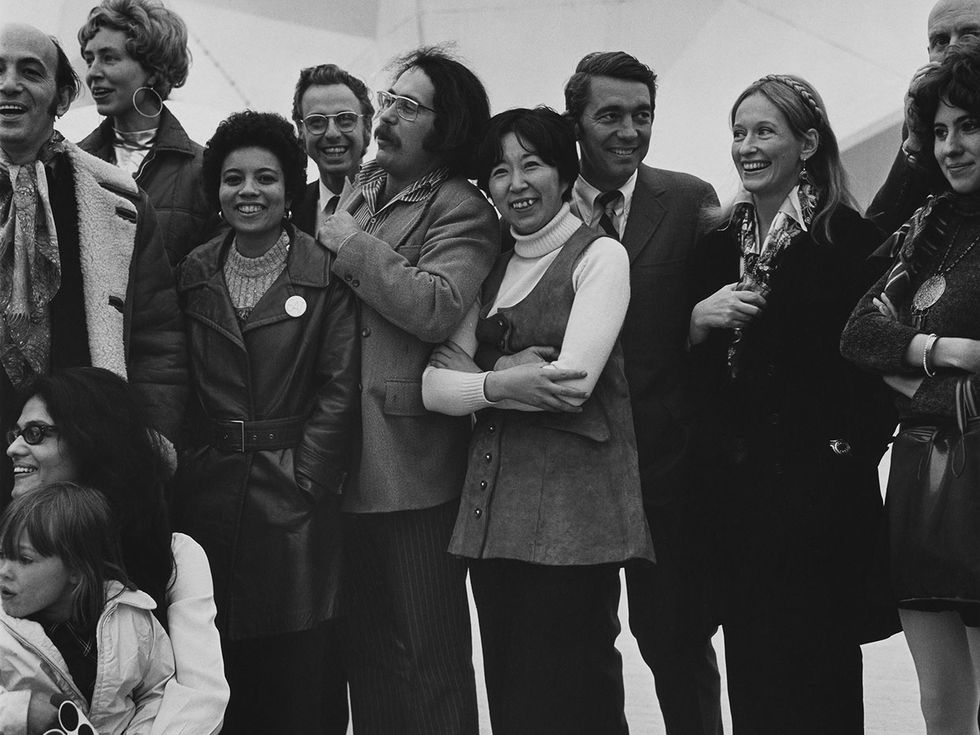
Eventually, Nakaya decided that her fog would be generated out of pure water. For help, she turned to Thomas R. Mee, a physicist in the Pasadena area whom Elsa Garmire knew. Mee had just started his own company to make instruments for weather monitoring. He had never heard of Klüver or E.A.T., but he knew of Nakaya's father's pioneering research on snow.
Mee and Nakaya figured out how to create fog by spraying the water under high pressure through copper lines fitted with very narrow nozzles. The lines hugged the edges of the geodesic structure, and the 2,500 or so nozzles atomized some 41,600 liters of water an hour. The pure white fog spilled over the structure's angled and faceted roof and drifted gently over the fairground. Breer compared it to the clouds found in Edo-period Japanese landscape paintings.
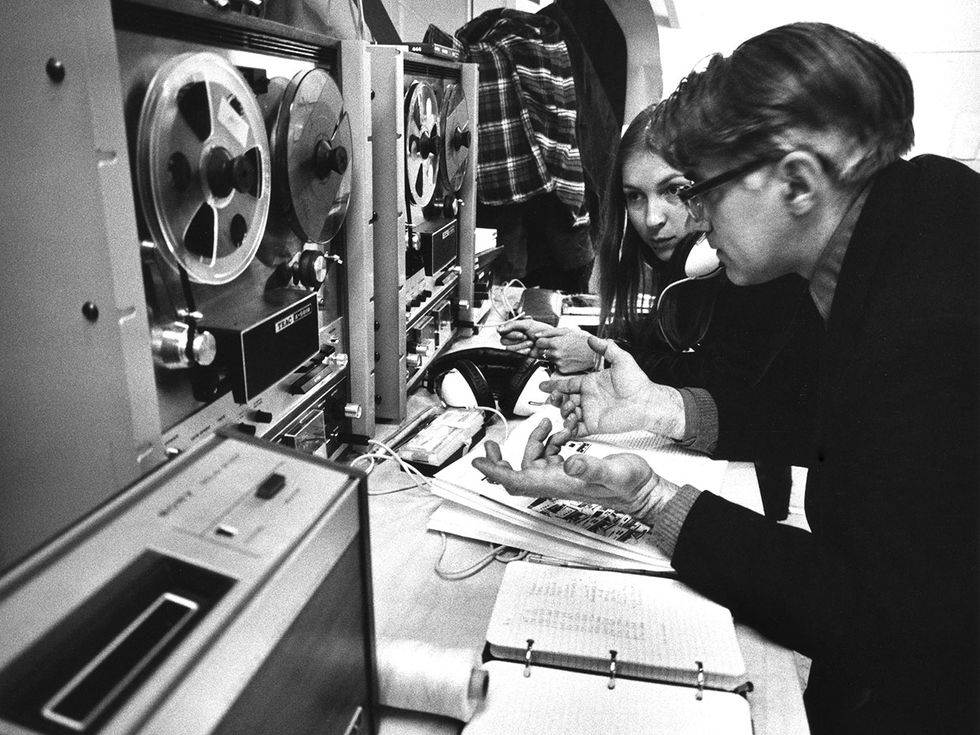
While the fog and mirrored dome were the pavilion's most obvious features, hidden away in a control room sat an elaborate computerized sound system.
Designed by Tudor, the system could accept signal inputs from 32 sources, which could be modified, amplified, and toggled among 37 speakers. The sources could be set to one of three modes: “line sound," in which the sound switched rapidly from speaker to speaker in a particular pattern; “point sound," in which the sound emanated from one speaker; and “immersion" or “environmental" mode, where the sound seemed to come from all directions. “The listener would have the impression that the sound was somehow embodied in a vehicle that was flying about him at varying speeds," Tudor explained.
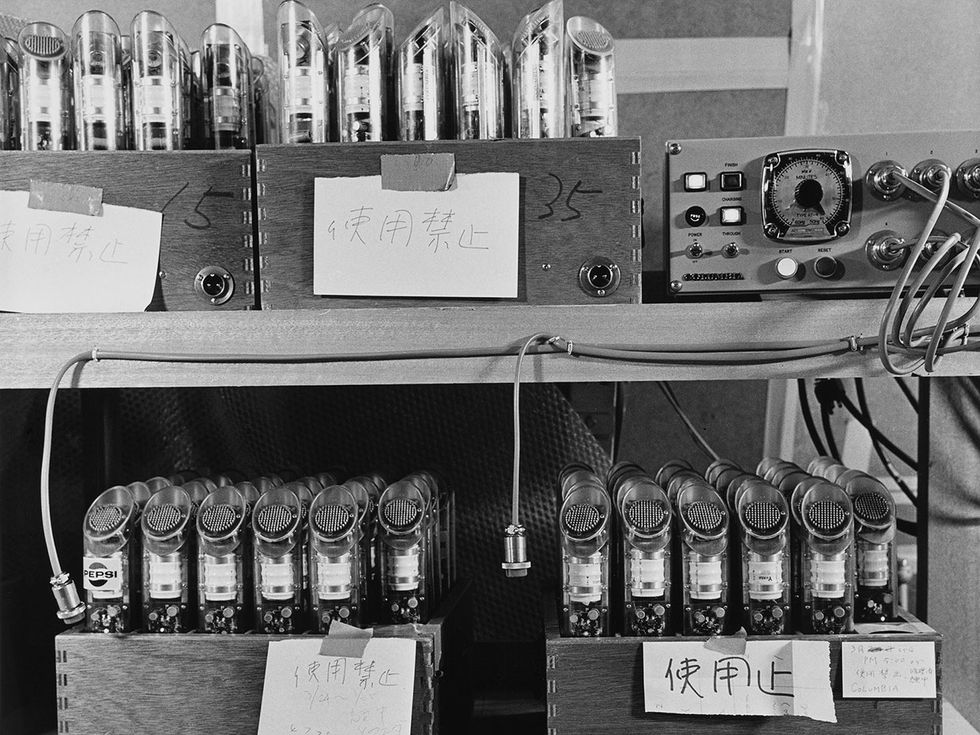
The audio system also served as an experimental lab. Much as researchers might book time on a particle accelerator or a telescope, E.A.T. invited “resident programmers" to apply to spend several weeks in Osaka exploring the pavilion's potential as an artistic instrument. The programmers would have access to a library of several hundred “natural environmental sounds" as well as longer recordings that Tudor and his colleagues had prepared. These included bird calls, whale songs, heartbeats, traffic noises, foghorns, tugboats, and ocean liners. Applicants were encouraged to create “experiences that tend toward the real rather than the philosophical." Perhaps in deference to its patron's conservatism, E.A.T. specified it was “not interested in political or social comment."
In sharp contrast to E.A.T.'s sensibilities, Pepsi executives didn't view the pavilion as an experiment or even a work of art but rather as a product they had paid for. Eventually, they decided that they were not well pleased by what E.A.T. had delivered. On 20 April 1970, little more than a month after the pavilion opened to the public, Pepsi informed Klüver that E.A.T.'s services were no longer needed. E.A.T. staff who had remained in Osaka to operate the pavilion smuggled the audio tapes out, leaving Pepsi to play a repetitive and banal soundtrack inside its avant-garde building for the remaining months of the expo.
Despite E.A.T.'s abrupt ouster, many critics responded favorably to the pavilion. A Newsweek critic called it “an electronic cathedral in the shape of a geodesic dome," neither “fine art nor engineering but a true synthesis." Another critic christened the pavilion a “total work of art"—a Gesamtkunstwerk—in which the aesthetic and technological, human and organic, and mechanical and electric were united.
In hindsight, the Pepsi Pavilion was really the apogee for the art-and-technology movement that burst forth in the mid-1960s. This first wave did not last. Some critics contended that in creating corporate-sponsored large-scale collaborations like the pavilion, artists compromised themselves aesthetically and ethically—“freeload[ing] at the trough of that techno-fascism that had inspired them," as one incensed observer wrote. By the mid-1970s, such expensive and elaborate projects had become as discredited and out of fashion as moon landings.
The Engineer's Perspective
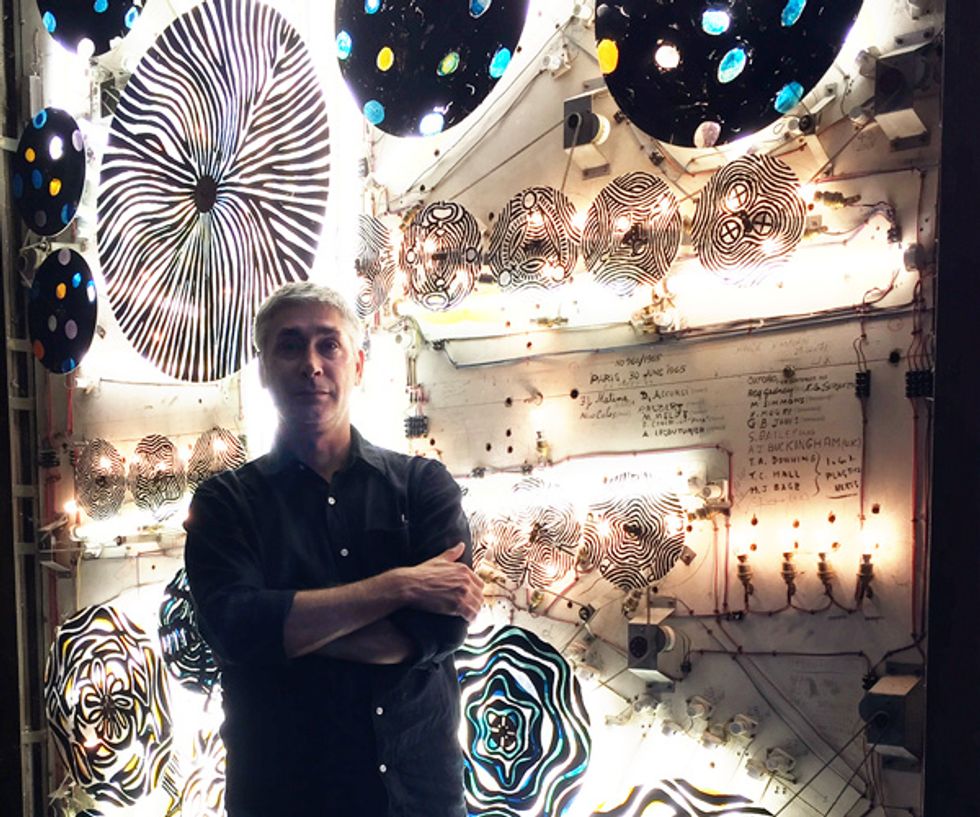
“Engineers often don't leave a strong presence in the historical record." That's how W. Patrick McCray politely describes the frustration he and other historians face when trying to piece together historical narratives about engineers. Unlike scientists and artists, he notes, engineers tend not to write memoirs, nor do they show up in archival collections.
“The signal strength tends to be swamped by artists or scientists," McCray says.
One engineering project that did leave a vast paper trail was the Pepsi Pavilion. That extensive record may have something to do with the fact that the team who built the pavilion included numerous artists and scientists as well as engineers. The pavilion was the work of Experiments in Art and Technology, or E.A.T., an influential group overseen by Bell Telephone Laboratories engineer Johan Wilhelm “Billy" Klüver.
Over the years, art critics and art historians have considered the pavilion, but not from the engineers' perspective. McCray, a history professor at the University of California, Santa Barbara, whose academic degrees are all in engineering, enjoyed diving into the technical details and learning how Klüver and the other engineers collaborated with their artistic partners.
The Pepsi Pavilion is one of a number of art-and-technology projects that McCray features in his new book, Making Art Work: How Cold War Engineers and Artists Forged a New Creative Culture, which will be published this fall by the MIT Press. (The photo above shows McCray with a kinetic sculpture by the pioneering rocketeer Frank Malina, who is also profiled in the book.)
Part of McCray's research for the chapter on the Pepsi Pavilion involved “plowing through two dozen giant boxes of paper" archived at the Getty Research Institute. But he also contacted people involved with the project to get access to materials that weren't in formal collections. For example, Julie Martin, Klüver's widow, shared with McCray an extensive set of personal records and photos.
“It's like you're a detective in a police procedural gathering evidence," McCray says. “After a while you end up with a new view."
Nonetheless, for many E.A.T. members, the Pepsi Pavilion left a lasting mark. Elsa Garmire's artistic experimentation with lasers led to her cofounding a company, Laser Images, which built equipment for laser light shows. Riffing on the popularity of planetarium shows, the company named its product the “laserium," which soon became a pop-culture fixture.
Meanwhile, Garmire shifted her professional energies back to science. After leaving Caltech for the University of Southern California, she went on to have an exceptionally successful career in laser physics. She served as engineering dean at Dartmouth College and president of the Optical Society of America. Years later, Garmire said that working with artists influenced her interactions with students, especially when it came to cultivating a sense of play.
After Expo '70 ended, Mee filed for a U.S. patent to cover an “Environmental Control Method and Apparatus" derived from his pavilion work. As his company, Mee Industries, grew, he continued his collaborations with Nakaya. Even after Mee's death in 1998, his company contributed hardware to installations Nakaya designed for the Guggenheim Museum in Bilbao, Spain. More recently, her Fog Bridge [PDF] was integrated into the Exploratorium building in San Francisco.
Billy Klüver insisted that the success of his organization would ultimately be judged by the degree to which it became redundant. By that measure, E.A.T. was indeed a success, even if events didn't unfold quite the way he imagined. At universities in the United States and Europe, dozens of programs now explore the intersections of art, technology, engineering, and design. It's common these days to find tech-infused art in museum collections and adorning public spaces. Events like Burning Man and its many imitators continue to explore the experimental edges of art and technology—and to emphasize the process over the product.
And that may be the legacy of the pavilion and of E.A.T.: They revealed that engineers and artists could forge a common creative culture. Far from being worlds apart, their communities share values of entrepreneurship, adaptability, and above all, the collective desire to make something beautiful.
This article appears in the March 2020 print issue as “Big in Japan."
This article was updated on 2 March 2020.
